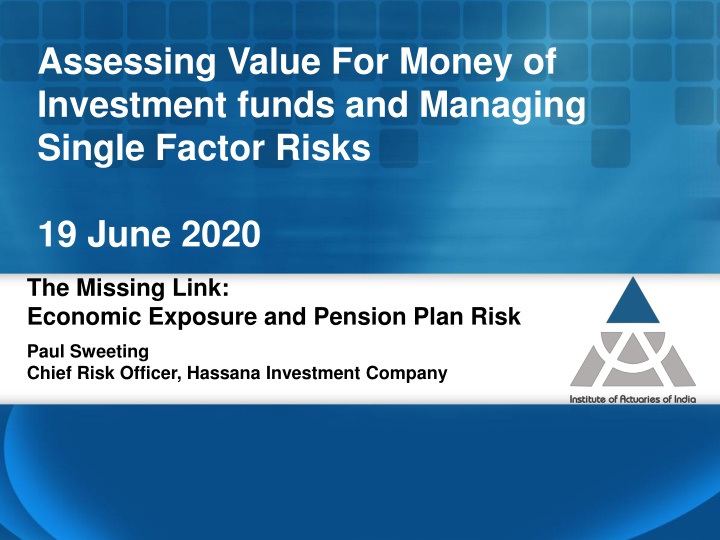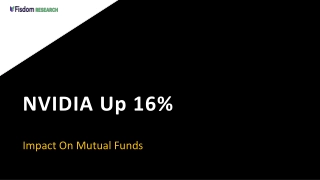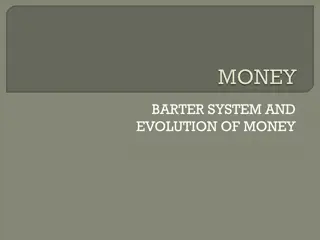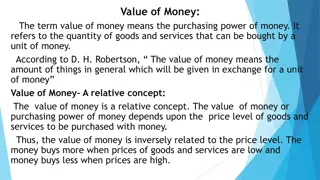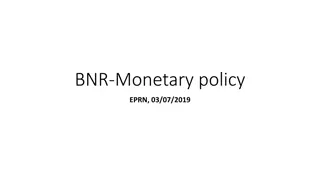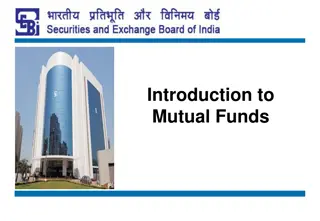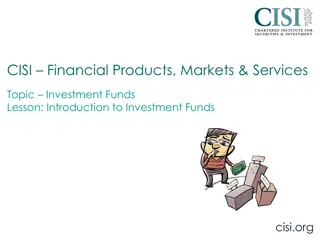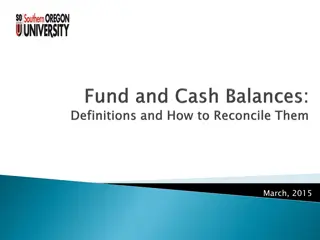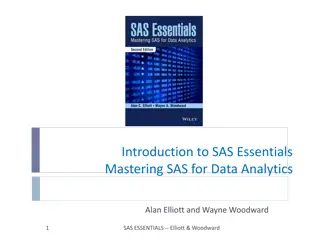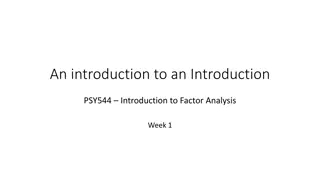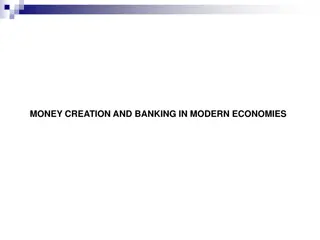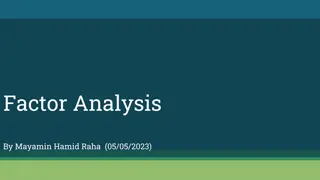Assessing Value for Money of Investment Funds and Managing Single Factor Risks
An analysis on the economic exposure and pension plan risks, emphasizing sponsor covenant risk and the need for resilient asset allocation. The study delves into measuring risk with VaR and CVaR methodologies, focusing on generating returns with observed investment features. The content highlights the interplay between pension plans and economic risks affecting sponsors, aiming to optimize fund performance and mitigate potential losses.
Download Presentation

Please find below an Image/Link to download the presentation.
The content on the website is provided AS IS for your information and personal use only. It may not be sold, licensed, or shared on other websites without obtaining consent from the author.If you encounter any issues during the download, it is possible that the publisher has removed the file from their server.
You are allowed to download the files provided on this website for personal or commercial use, subject to the condition that they are used lawfully. All files are the property of their respective owners.
The content on the website is provided AS IS for your information and personal use only. It may not be sold, licensed, or shared on other websites without obtaining consent from the author.
E N D
Presentation Transcript
Assessing Value For Money of Investment funds and Managing Single Factor Risks 19 June 2020 The Missing Link: Economic Exposure and Pension Plan Risk Paul Sweeting Chief Risk Officer, Hassana Investment Company
Overview Defined benefit pension plans do not exist in isolation They must be funded somehow Many (most?) DB plans are in deficit Ability of sponsor to make good any deficit is key This is known as the sponsor covenant Applies to private sector and state schemes www.actuariesindia.org
Sponsor covenant risk All sponsors are exposed to risks Some are quite general (e.g. economic growth) Some are more specific (e.g. particular commodities) Sometimes several distinct factors are involved These factors affect not just the sponsor they may also affect the investments www.actuariesindia.org
The analysis Two parts to this analysis 1. Measuring the exposure of the pension plan to economic risks affecting the sponsor 2. Adjusting the asset allocation of the pension plan to make it more resilient against such risks www.actuariesindia.org
Generating returns The model used recognises observed investment features Returns in illiquid assets are unsmoothed Asset class returns are modelled using skew-t distributions Returns are linked using a t-copula Pretty good results could be obtained just using a multivariate normal distribution but if illiquid assets should still be unsmoothed www.actuariesindia.org
Measuring risk: VaR VaR (Value at Risk) measures the point beyond which losses are unlikely to occur with a particular degree of confidence over a particular time horizon A 99% one-month VaR of -3.5% tells you that there is a 1% chance that losses will exceed 3.5% in any month www.actuariesindia.org
CVaR CVaR (Conditional Value at Risk) measures the average losses between the threshold A 99% one-month CVaR of -5% tells you that the average of the worst 1% of losses expected for a given month is 5% www.actuariesindia.org
and CRCVaR CRCVaR (Conditional Return CVaR) uses the same principal as CVaR but is conditioned on an external risk A 99% one-month portfolio CRCVaR of -4% conditioned on the oil price tells you that for the worst 1% of oil price falls for a given month, the average loss on the portfolio is 4% Mathematically, if CVaR = E[X|X<x] CRCVaR = E[X|Y<y] www.actuariesindia.org
CRCVaR: an example Assume that the asset of interest is the price of oil and we are interested in CRCVar95 We simulate the returns on both the asset and the portfolio then calculate the average of the latter based on the tail of the former www.actuariesindia.org
CRCVaR: an example VaR or CVaR can be calculated for the portfolio or the oil return But CRCVaR calculates the average return conditioned on the change in the oil price www.actuariesindia.org
Improving resilience Two potential approaches covered here 1. Changing the allocation between asset classes 2. Changing the allocation within asset classes www.actuariesindia.org
Asset allocation If an asset allocation is efficient, changing it to improve the CRCVaR will move it to a different point on the frontier or will make it less efficient So it is best used as a guide or when optimal asset allocations are undesirable This depends on how return assumptions are derived www.actuariesindia.org
Equity benchmarks Start with an equity index Calculate the market-implied sector returns based on weights, volatilities and correlation Similar to the starting point for the Black- Litterman model Underweight sectors positively correlated to risk factor www.actuariesindia.org
Other considerations We focus on scenarios where a drop in the oil price is bad but in some industries, this is good (e.g. aviation) Other commodities can also be used Combinations of risk factors can be constructed by regressing risk factors on earnings, or even share price www.actuariesindia.org
Further reading www.actuariesindia.org
